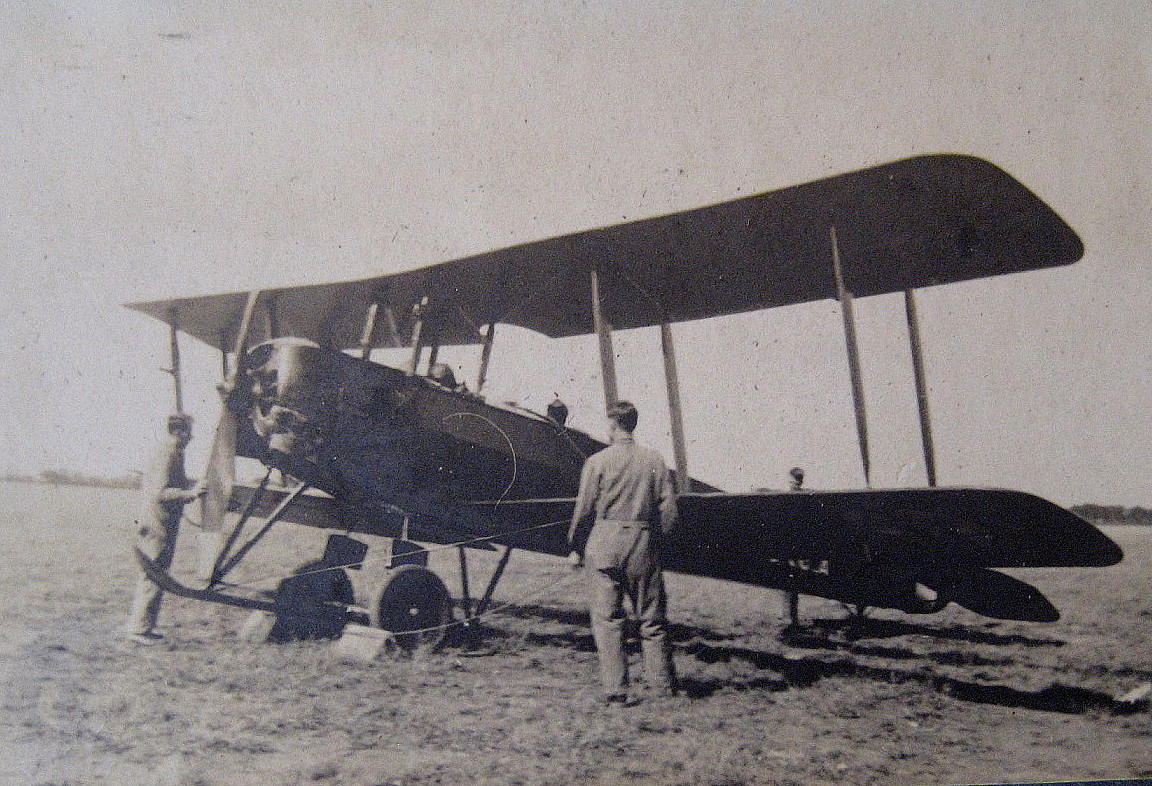Grantham
Note: This map only shows the WW2 airfield site.
GRANTHAM: Temporary aerodrome?
NOTES: GRANTHAM is listed as a venue for CD Barnard Air Tours in June 1931 but as it was common practise by these “Tour” or “Flying Circus” operators to often avoid using established aerodromes I think a separate listing might be justified here. Does anybody now know where they operated from? I suppose it is possible they used the site listed below) It appears that at least one of the Alan Cobham Tours visited Grantham, and that was on the 14th June 1932 during the National Aviation Day UK Display Tour, and the venue was given as; Spittlegate Hill, Salterford, Grantham. This is of course pretty much the postal address of RAF GRANTHAM but it would be a mistake to automatically assume they used the RAF aerodrome.
GRANTHAM: Military aerodrome (Aka SPITALGATE, SPITTLEGATE HILL and RAF SPITTLEGATE in WW2) See also SPITTLEGATE
Note: Picture by the author.
Military users:
WW1: RFC/RAF Training Squadron Station and Training Depot Station
12 FTS (Flying Training School)
29 Sqdn (SE.5As)
91 Sqdn (BE.2c's?)
A DONALD LIPP GALLERY
Note: In January 2021 Donald Lipp very kindly sent these very rare pictures taken by his father when serving as a medical officer here in WW1. No doubt he had to attend to the often gruesome results to many of these crashes.
1918 to 1939: RAF
100 Sqdn (Bristol F.2bs, DH.9As, - later Vickers Vimy's then Fairey Fawns and finally Hawker Horsleys)
3 FTS, 12 FTS (Avro Tutors, Tiger Moths & Harvards)
1930s (Avro Ansons & Fairey Battles)
WW2: RAF Flying Training Command 21 Group
12 AFU (Bristol Blenheims/ Airspeed Oxfords)
12 SFTS
1536 BAT Flt (Oxfords)
5 Group Communications Flight (Westland Lysanders)
USAAF 1943: IX Troop Carrier Command
POST WW2: Officer Cadet Training Unit (1950s)
Gliding: Central Gliding School 1950s to 1970s?
Location: Near Saltersford, more or less on the modern Army barracks site, W of Coldharbour and roughly 2nm ESE of Grantham town centre
Period of operation: 1915 to 1976
Site area in WW1: ?
Runways in WW2: Note: Grass reinforced with steel matting
11/29 1061 grass 05/23 1189 grass
NE/SW 1372 grass
NOTES: In the early to mid 1930s the Armstrong Whitworth dual-control Atlas type was employed here by the RAF for training. Tracing this aerodrome was quite a task at first but when John Ashby lent me the use of some Ordnance Survey ‘Aviation Maps’ published in 1930 GRANTHAM was clearly displayed - see above. Oddly enough GRANTHAM is not listed in the Omnibus Edition of Military Airfields by Steve Willis and Barry Hollis because during WW2 the airfield was renamed RAF SPITTLEGATE (SPITALGATE) in 1942.
To add further confusion, during the King's Cup Air Races in 1927 Spittlegate (Grantham) was listed as being a 'Staging Post'. And it doesn't stop there: The 1932 itinerary for Alan Cobham's National Aviation Day UK Display Tour gives the venue on the 14th June as; Spittlegate Hill, Salterford, Grantham. I now realise that it is entirely possible that the Cobham operation may well have used a field close to or even adjacent to the RAF aerodrome.
TIGER MOTHS ARRIVE
In May 2014 I was pleased to discover a mention of RAF GRANTHAM by Stuart McKay in his excellent book Tiger Moth: “The first batch of military Tiger Moths was comprehensively air tested overhead Stag Lane in November 1931 much to the general satisfaction of the DH workforce, and the following day the aeroplanes were ferried to RAF Grantham. The pilots of No.24 (Communications) Squadron, normally based at Northolt, described the generous pre- departure hospitality as “typically DH” and welcome in view of the sub-zero temperature.” Knowing now of how things often were in those days, I suspect a tot or two of whisky (or similar) was provided?
T.6 HARVARDS
I think it is also interesting that the first North American T.6 Harvards entered RAF service here in December 1938. Well before WW2 started and the outset of the now notorious ‘Lend-Lease’ agreement and a device some claim, engineered by the USA to nigh on bankrupt the ‘British Empire’ and give the USA world dominance in industrial/financial terms. I expect there is an element of truth in this?
OPERATION MARKET GARDEN
According to the Wikipedia entry, this RAF Station was the training and point-of-departure airfield for the Polish 1st Independent Parachute Brigade during Operation Market Garden. For those who are unaware of Operation Market Garden this was conceived as a way to expel the German forces from the The Netherlands by forming 'bridge-heads' along the Rhine, and especially around Arnhem where Allied Commanders wanted the bridge saved. The troops and equipment were all either parachuted in or arrived in large gliders such as the Airpeed Horsa. In short, it was a disaster for the Allies.
MORE INFO
Also in the Wikipedia entry is the following information for the post-1945 period: "The Station was an Officer Cadet Training Unit (OCTU) in the 1950s. Much later it became the Women's Royal Air Force (WRAF) Depot, responsible for the recruitment and training of all non-commissioned females in the RAF, until this moved to RAF Hereford and later again to RAF Swinderby. It was also the home of the Central Gliding School which moved to RAF Syerston in March 1975."
"Spitalgate acted as a parent station for a relief landing ground four miles further south at RAF Harlaxton from November 1916 until 1945."
"In 1975 the RAF vacated the site and the following year it became a British Army base known as Prince William of Gloucester Barracks. However the site is still used by the Grantham & District Model Aircraft Society."
We'd love to hear from you, so please scroll down to leave a comment!
Leave a comment ...
Copyright (c) UK Airfield Guide





















